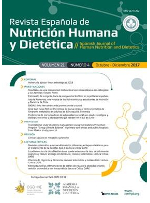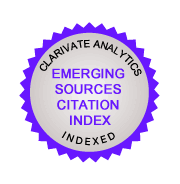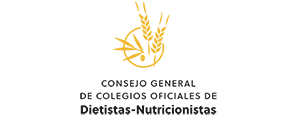Influencia del confinamiento por COVID-19 en los hábitos de actividad física, consumo de snacks y alcohol en población Española
Influencia del COVID-19 en la actividad física, snacks y alcohol en población Española
DOI:
https://doi.org/10.14306/renhyd.29.2.2331Palabras clave:
actividad física, consumo de snacks, consumo de alcohol, COVID-19, confinamiento domiciliarioResumen
Introducción: El confinamiento domiciliario impuesto globalmente como consecuencia de la COVID-19 puede influir y provocar complicaciones en la salud de la población. Pueden producirse cambios en la actividad física, el sedentarismo y los hábitos alimentarios. Los malos hábitos alimentarios y de movilidad pueden empeorar el estado de salud de las personas. El objetivo de este estudio es analizar los cambios en la frecuencia de actividad física durante el internamiento y su relación o no con el consumo de alcohol y aperitivos.
Metodología: La metodología utilizada fue el envío de un cuestionario online a la población española con preguntas relacionadas con el estilo de vida, los hábitos alimentarios y la actividad física. Se obtuvo una muestra de 1640 personas.
Resultados: Los resultados muestran que la frecuencia de actividad física disminuyó en general durante el encierro en la población estudiada. Por otro lado, no se encontró relación entre la práctica de actividad física y el consumo de bebidas alcohólicas, pero podría estar relacionado con el consumo de snacks.
Conclusiones: La población adulta española disminuyó globalmente la actividad física diaria y aumentó el consumo de snacks durante el periodo de confinamiento COVID-19.
Financiación: “Los autores/as declaran que no ha existido financiación para realizar este estudio”.
Citas
(1) Velavan TP, Meyer CG. The COVID-19 epidemic. Trop Med Int Heal. 2020;25(3):278-80. 10.1111/tmi.13383
(2) Ammar A, Brach M, Trabelsi K, Chtourou H, Boukhris O, Masmoudi L, et al. Effects of COVID-19 Home Confinement on Eating Behaviour and Physical Activity: Results of the ECLB-COVID19 International Online Survey. Nutrients. 2020;12(6). 10.3390/nu12061583
(3) Dubey S, Biswas P, Ghosh R, Chatterjee S, Dubey MJ, Chatterjee S, et al. Psychosocial impact of COVID-19. Diabetes Metab Syndr. 2020;14(5):779-88. 10.1016/j.dsx.2020.05.035
(4) Lavie CJ, Ozemek C, Carbone S, Katzmarzyk PT, Blair SN. Sedentary Behavior, Exercise, and Cardiovascular Health. Circ Res. 2019;124(5):799-815. 10.1161/CIRCRESAHA.118.312669
(5) Maestre A, Sospedra I, Martínez-Sanz JM, Gutierrez-Hervas A, Fernández-Saez J, Hurtado-Sánchez JA, et al. Assessment of Spanish Food Consumption Patterns during COVID-19 Home Confinement. Nutrients. 2021;13(11). 10.3390/nu13114122
(6) López-Moreno M, López MTI, Miguel M, Garcés-Rimón M. Physical and Psychological Effects Related to Food Habits and Lifestyle Changes Derived from Covid-19 Home Confinement in the Spanish Population. Nutrients. 2020;12(11). 10.3390/nu12113445
(7) Kriaucioniene V, Bagdonaviciene L, Rodríguez-Pérez C, Petkeviciene J. Associations between Changes in Health Behaviours and Body Weight during the COVID-19 Quarantine in Lithuania: The Lithuanian COVIDiet Study. Nutrients. 2020;12(10). 10.3390/nu12103119
(8) Charlet K, Heinz A. Harm reduction-a systematic review on effects of alcohol reduction on physical and mental symptoms. Addict Biol. 2017;22(5):1119-59. 10.1111/adb.12414
(9) An H-Y, Chen W, Wang C-W, Yang H-F, Huang W-T, Fan S-Y. The Relationships between Physical Activity and Life Satisfaction and Happiness among Young, Middle-Aged, and Older Adults. Int J Environ Res Public Health. j 2020;17(13). 10.3390/ijerph17134817
(10) Martinsen EW. Physical activity in the prevention and treatment of anxiety and depression. Nord J Psychiatry. 2008;62(4):25-9. 0.1080/08039480802315640
(11) Bahi A, Dreyer J-L. Anxiety and ethanol consumption in socially defeated mice; effect of hippocampal serotonin transporter knockdown. Behav Brain Res. 2023;451:114508. 10.1016/j.bbr.2023.114508
(12) Filgueira TO, Castoldi A, Santos LER, de Amorim GJ, de Sousa Fernandes MS, Anastácio W de L do N, et al. The Relevance of a Physical Active Lifestyle and Physical Fitness on Immune Defense: Mitigating Disease Burden, With Focus on COVID-19 Consequences. Front Immunol. 2021;12:587146. 10.3389/fimmu.2021.587146
(13) Lachat C, Hawwash D, Ocké MC, Berg C, Forsum E, Hörnell A, et al. Strengthening the Reporting of Observational Studies in Epidemiology - nutritional epidemiology (STROBE-nut): An extension of the STROBE statement. Nutr Bull. 2016;41(3):240-51. 10.1371/journal.pmed.1002036
(14) Ministerio de Sanidad, Instituto Nacional de Estadística, Servicios Sociales e Igualdad. Metodología de la Encuesta Nacional de Salud 2017. Encuesta Nac Salud España [Internet]. 2017;64. Available in: https://www.ine.es/metodologia/t15/t153041917.pdf
(15) Hess JM, Jonnalagadda SS, Slavin JL. What Is a Snack, Why Do We Snack, and How Can We Choose Better Snacks? A Review of the Definitions of Snacking, Motivations to Snack, Contributions to Dietary Intake, and Recommendations for Improvement. Adv Nutr. 2016;7(3):466-75. 10.3945/an.115.009571
(16) Ministerio de Sanidad. Alcohol y menores. El alcohol te destroza. [Internet]. España. 2007. Available in: https://www.sanidad.gob.es/campannas/campanas07/alcoholmenores9.htm
(17) Mantilla Toloza SC, Gómez-Conesa A. El Cuestionario Internacional de Actividad Física. Un instrumento adecuado en el seguimiento de la actividad física poblacional. Rev Iberoam Fisioter Kinesol 2007;10(1):48-52. 10.1016/S1138-6045(07)73665-1.
(18) Rodríguez-Pérez C, Molina-Montes E, Verardo V, Artacho R, García-Villanova B, Guerra-Hernández EJ, et al. Changes in Dietary Behaviours during the COVID-19 Outbreak Confinement in the Spanish COVIDiet Study. Nutrients. 2020;12(6). 10.3390/nu12061730
(19) Stanton R, To QG, Khalesi S, Williams SL, Alley SJ, Thwaite TL, et al. Depression, Anxiety and Stress during COVID-19: Associations with Changes in Physical Activity, Sleep, Tobacco and Alcohol Use in Australian Adults. Int J Environ Res Public Health. 2020;17(11). 10.3390/ijerph17114065
(20) Clay JM, Parker MO. Alcohol use and misuse during the COVID-19 pandemic: a potential public health crisis?. Lancet. Public Health. 2020 May;5(5):e259. 10.1016/S2468-2667(20)30088-8
(21) AESAN, Alfredo Martínez Hernández J, Cámara Hurtado M, Maria Giner Pons R, González Fandos E, López García E, et al. Informe del Comité Científico de la Agencia Española de Seguridad Alimentaria y Nutrición (AESAN) de revisión y actualización de las Recomendaciones Dietéticas para la población española. Rev del Com científico. 2020;32:11-58.
(22) Norte A, Sospedra I, Ortiz-Moncada R. Influence of economic crisis on dietary quality and obesity rates. Int J Food Sci Nutr. 2019;70(2):232-239. 10.1080/09637486.2018.1492523.
(23) Romero-Blanco C, Rodríguez-Almagro J, Onieva-Zafra MD, Parra-Fernández ML, Prado-Laguna MDC, Hernández-Martínez A. Physical Activity and Sedentary Lifestyle in University Students: Changes during Confinement Due to the COVID-19 Pandemic. Int J Environ Res Public Health. 2020;17(18). 10.3390/ijerph17186567
(24) Szabo A, Vega RD La, Ruiz-BarquÍn R, Rivera O. Exercise addiction in Spanish athletes: Investigation of the roles of gender, social context and level of involvement. J Behav Addict. 2013;2(4):249-52. 0.1556/JBA.2.2013.4.9
(25) Lichtenstein MB, Melin AK, Szabo A, Holm L. The Prevalence of Exercise Addiction Symptoms in a Sample of National Level Elite Athletes. Front Sport Act living. 2021;3:635418. 10.3389/fspor.2021.635418
(26) Warburton DER, Bredin SSD. Health benefits of physical activity: a systematic review of current systematic reviews. Curr Opin Cardiol. 2017;32(5):541-56. 10.1097/HCO.0000000000000437
(27) Hossain MM, Sultana A, Purohit N. Mental health outcomes of quarantine and isolation for infection prevention: a systematic umbrella review of the global evidence. Epidemiol Health. 2020:42:e2020038. 10.4178/epih.e2020038
(28) Ammar A, Trabelsi K, Brach M, Chtourou H, Boukhris O, Masmoudi L, et al. Effects of home confinement on mental health and lifestyle behaviours during the COVID-19 outbreak: insights from the ECLB-COVID19 multicentre study. Biol Sport. 2020;38(1):9-21. 10.5114/biolsport.2020.96857
(29) Martinez-Ferran M, de la Guía-Galipienso F, Sanchis-Gomar F, Pareja-Galeano H. Metabolic Impacts of Confinement during the COVID-19 Pandemic Due to Modified Diet and Physical Activity Habits. Nutrients. 2020;12(6). 10.3390/nu12061549
(30) Ejtahed H-S, Mardi P, Hejrani B, Mahdavi FS, Ghoreshi B, Gohari K, et al. Association between junk food consumption and mental health problems in adults: a systematic review and meta-analysis. BMC Psychiatry. 2024;24(1):438. 10.1186/s12888-024-05889-8
(31) Granger R, Kubis HP. Too much is too much: Influence of former stress levels on food craving and weight gain during the COVID-19 period. PLoS One. 2023;18(4):e0277856. 10.1371/journal.pone.0277856
(32) Teychenne M, Stephens LD, Costigan SA, Olstad DL, Stubbs B, Turner AI. The association between sedentary behaviour and indicators of stress: a systematic review. BMC Public Health. 2019;19(1):1357. 10.1186/s12889-019-7717-x
(33) Aguilera Pérez DR. Normalización del consumo de alcohol como factor de riesgo. Trabajo de Fin de Grado, Univerdiad de la Laguna 2019;1-29.
(34) Sánchez-Recio R, Parrilla-Huertas JA, Asensio-Martinez Á, Valdivieso-Pardos S, Zúñiga-Antón M, Cerdán-Bernad M. The influence of alcohol consumption on Self-Rated Health and Mood during the COVID-19 pandemic in Spain. Front Public Health. 2023;11:1257459. 10.3389/fpubh.2023.1257459
(35) Sánchez Pardo L. Consumo alcohólico en la población española. Adicciones. 2002;14(1):79-97.
(36) Wardell JD, Kempe T, Rapinda KK, Single A, Bilevicius E, Frohlich JR, et al. Drinking to Cope During COVID-19 Pandemic: The Role of External and Internal Factors in Coping Motive Pathways to Alcohol Use, Solitary Drinking, and Alcohol Problems. Alcohol Clin Exp Res. 2020;44(10):2073-83. 10.1111/acer.14425
(37) Fundación Dieta Mediterránea. ¿Qué es la Dieta Mediterránea? 2023.
(38) Mekanna AN, Panchal SK, Li L. Beyond lockdowns: a systematic review of the impacts of COVID-19 lockdowns on dietary pattern, physical activity, body weight, and food security. Nutr Rev. 2023;81(7):790-803. 10.1093/nutrit/nuac088
(39) Soe PP, Hnin ZL, Hlaing T, Min H. Changes in physical activity, dietary and sleeping pattern among the general population in COVID-19: A systematic review protocol. PLoS One. 2022;17(6):e0269202. 10.1371/journal.pone.0269202
(40) Alsaqqa RM, Alasmari RM, Altalhi RA, Filfilan N. The Impact of Quarantine on Physical Activity, Body Weight, and Eating Behaviors During the COVID-19 Pandemic in Saudi Arabia. Cureus. 2024;16(3):e56460. 10.7759/cureus.56460
(41) Abdulsalam NM, Khateeb NA, Aljerbi SS, Alqumayzi WM, Balubaid SS, Almarghlani AA, et al. Assessment of Dietary Habits and Physical Activity Changes during the Full COVID-19 Curfew Period and Its Effect on Weight among Adults in Jeddah, Saudi Arabia. Int J Environ Res Public Health. 2021;18(16). 10.3390/ijerph18168580
(42) Pérez-Rodrigo C, Citores MG, Bárbara GH, Litago FR, Casis L, Aranceta-bartrina J, et al. Cambios en los hábitos alimentarios durante el periodo de confinamiento por la pandemia COVID-19 en España. Rev Esp Nutr Comunitaria 2020; 26(2). 10.14642/RENC.2020.26.2.5213.
(43) Hariri N, Takrooni W, Nasraldin N, Bawahab N, Alfalogy E. Effect of the Long COVID-19 Quarantine and Associated Lack of Physical Activity on Overall Health. Cureus. noviembre de 2022;14(11):e30955. 10.7759/cureus.30955
(44) El Sayed S, Shokry D, Gomaa SM. Post-COVID-19 fatigue and anhedonia: A cross-sectional study and their correlation to post-recovery period. Neuropsychopharmacol reports. 2021;41(1):50-5. 10.1002/npr2.12154
(45) J Devoe D, Han A, Anderson A, Katzman DK, Patten SB, Soumbasis A, et al. The impact of the COVID-19 pandemic on eating disorders: A systematic review. Int J Eat Disord. 2023;56(1):5-25. 10.1002/eat.23704
Descargas
Publicado
Cómo citar
Número
Sección
Licencia
Derechos de autor 2020 Ana Maestre Cirugeda, Aurora Isabel Norte Navarro, José Miguel Martínez Sanz, José Fernández Sáez, Ana Gutiérrez Hervás, Isabel Sospedra López

Esta obra está bajo una licencia internacional Creative Commons Atribución-NoComercial-CompartirIgual 4.0.











